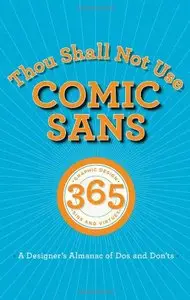Thou Shall Not Use Comic Sans: 365 Graphic Design Sins and Virtues: A Designer's Almanac of Dos and Don'ts By Tony Seddon, Sean Adams, John Foster, Peter Dawson
2012 | 384 Pages | ISBN: 0321812816 | EPUB + PDF | 21 MB + 21 MB
2012 | 384 Pages | ISBN: 0321812816 | EPUB + PDF | 21 MB + 21 MB
Ask any graphic designer the world over about their preferred approach to setting type, choosing a color, or beginning a new layout, and you will rarely get exactly the same answer twice. All designers have their own way of working and their own combinations of the thousands of techniques one can apply when planning a new design project. But there are some dos and don'ts that always figure in any heated debate about what one should or should not accept as the right way to create the best graphic design. This book looks at key dos and don'ts, bringing them together in the form of a classically structured almanac. Packed with practical advice, but presented in a light-hearted fashion, the advisory rather than dictative approach means designers can take or leave the advice presented in each rule as is typical of most creatives with their own strong views on what does and does not constitute good design practice. Individual entries will either bring forth knowing nods of agreement or hoots of derision, depending on whether or not the reader loves or hates hyphenation, has a pathological fear of beige, or thinks that baseline grids are boring. Thou Shall Not Use Comic Sans is the must-have collection of the best advice that any graphic designer should have at his fingertips, with each entry combining a specific rule with a commentary from a variety of experienced designers from all fields of the graphic design industry. Grouped into six, color-coded categories–typography, color, layout, imagery, production, and the practice of design–but presented numerically and in mixed groups, the reader can either dip in at random or use the book as the source of a daily lesson in how to produce great graphic design.



